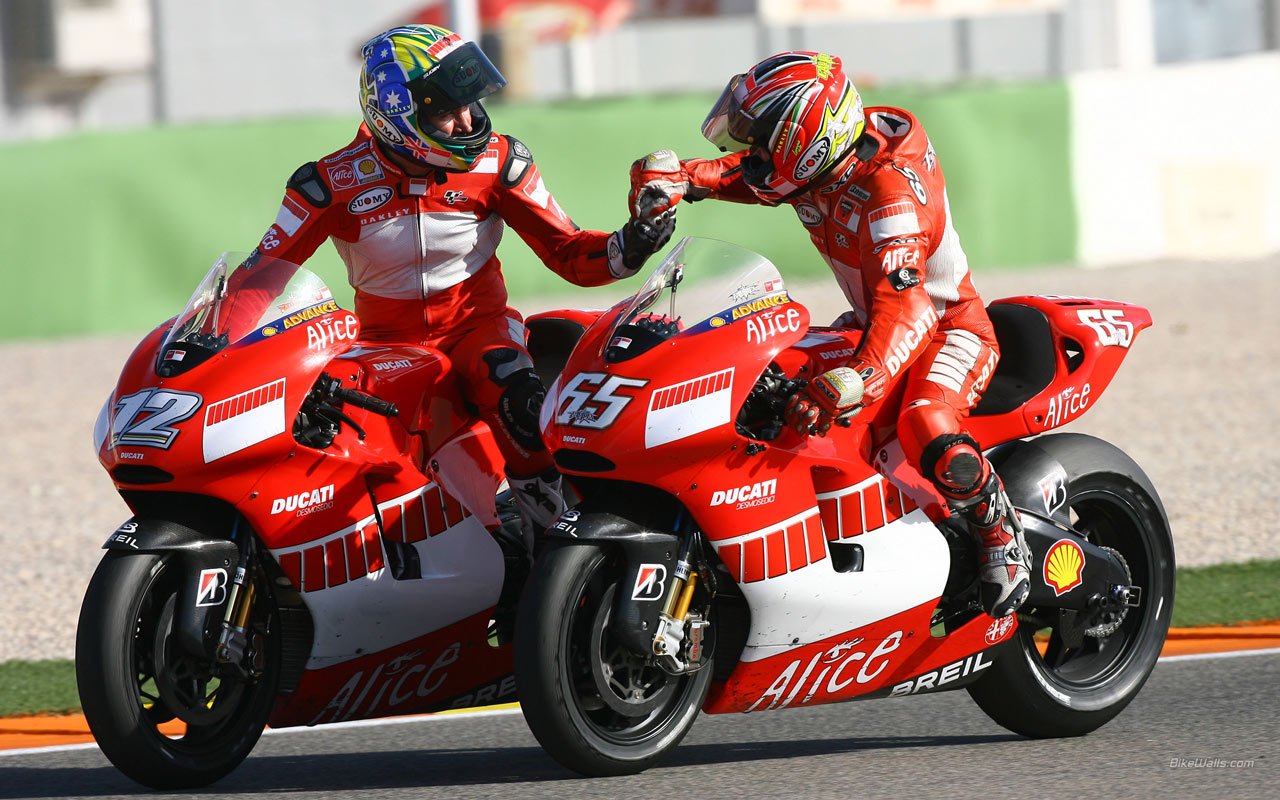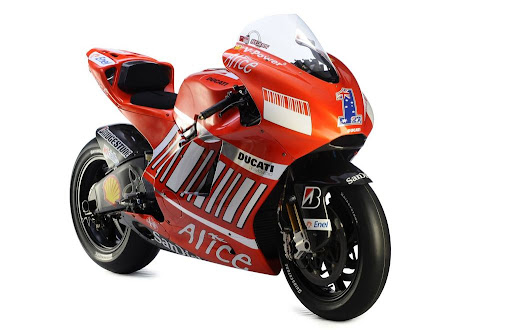


Until 2002, world class motorcycle racing was best represented by the 500cc World Championship. Riders took lightweight 2-cycle motorcycles at criminal speeds and required extremely skilled riders. Many of the major factories such as Honda, Yamaha, and Aprilia were represented but Ducati, the most traditional and successful racing bike was not. Ducati stayed out of the 500cc class because of the 2-stroke rule. The motorcycle racing governing body that regulated MotoGP decided however to allow the introduction of 4-stroke motorcycles in 2002. This opened the door to Ducati and others and set the scene for technological revolution.
Ducati engineers went to the drawing table and plugged hundreds of engine layout combinations into specialized engineering software. According to the computer models, the perfect combination of cylinders, valves, and layout was a L-4 cylinder, liquid-cooled, DOHC, Desmodromic, 4 valves per cylinder, gear driven camshafts engine. What followed were 5 years of trial and error and finally an incredible winning streak in 2007. By this time the public was clamoring for a street legal version of the bike.
In mid-2006 Ducati began taking orders from existing 1098S owners who wanted the bike and estimated delivery only in 2008. Boasting a 200hp engine and all the racing heritage you can ask for, the Desmosedici , which by the way means 16 (after the number of valves), is a dream come true. What makes the bike even more respectable is precisely the heritage since Ducati turned the mid century Desmodromic technology an important factor in the success of the bike on the tracks. While other manufacturers like Aprilia were experimenting with hydraulic lifter technologies, similar to that found in Formula 1, Ducati set out to repeat what made it's bikes winners in the international Superbike circuit, torquee light machines. With the added 2 cylinders, the Desmosedici is perfection defined.
0 comments:
Post a Comment